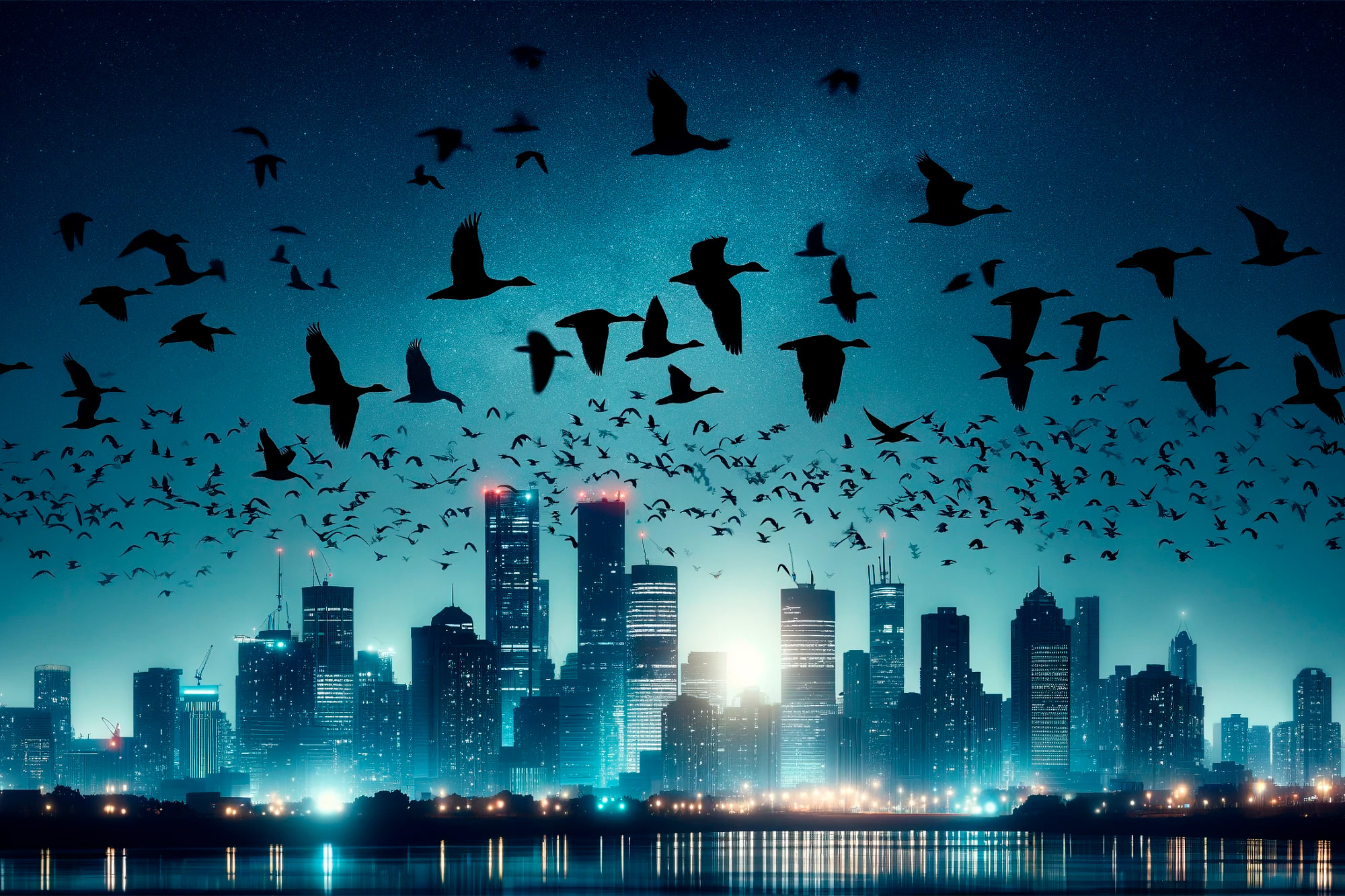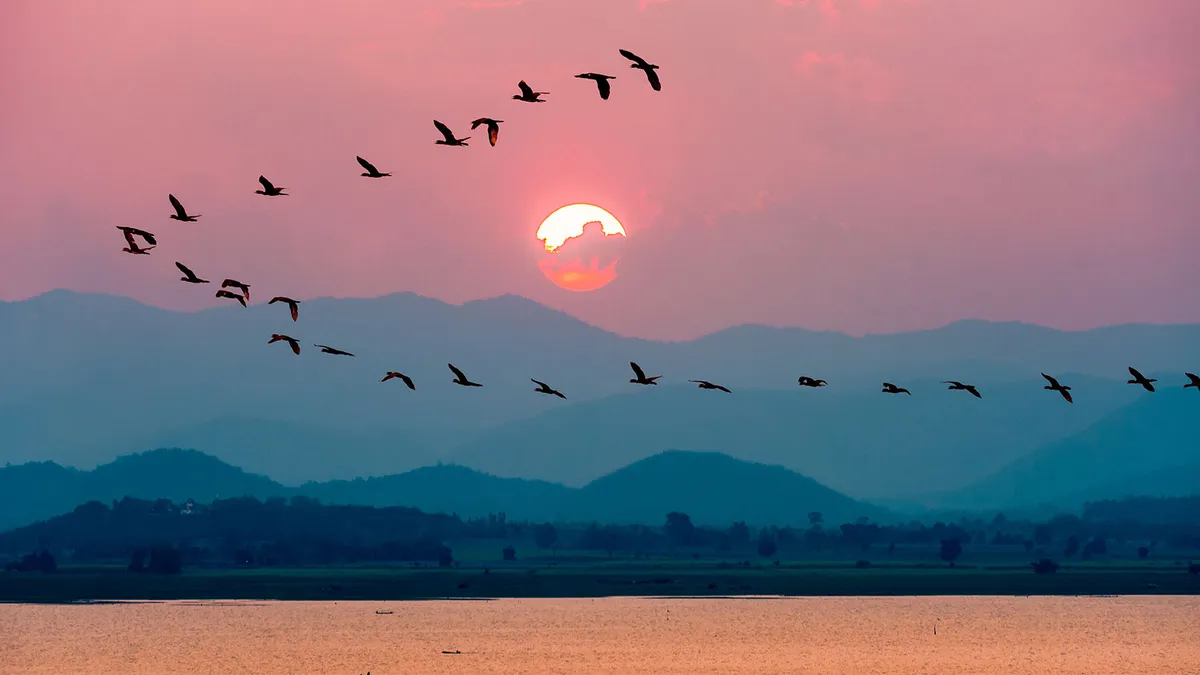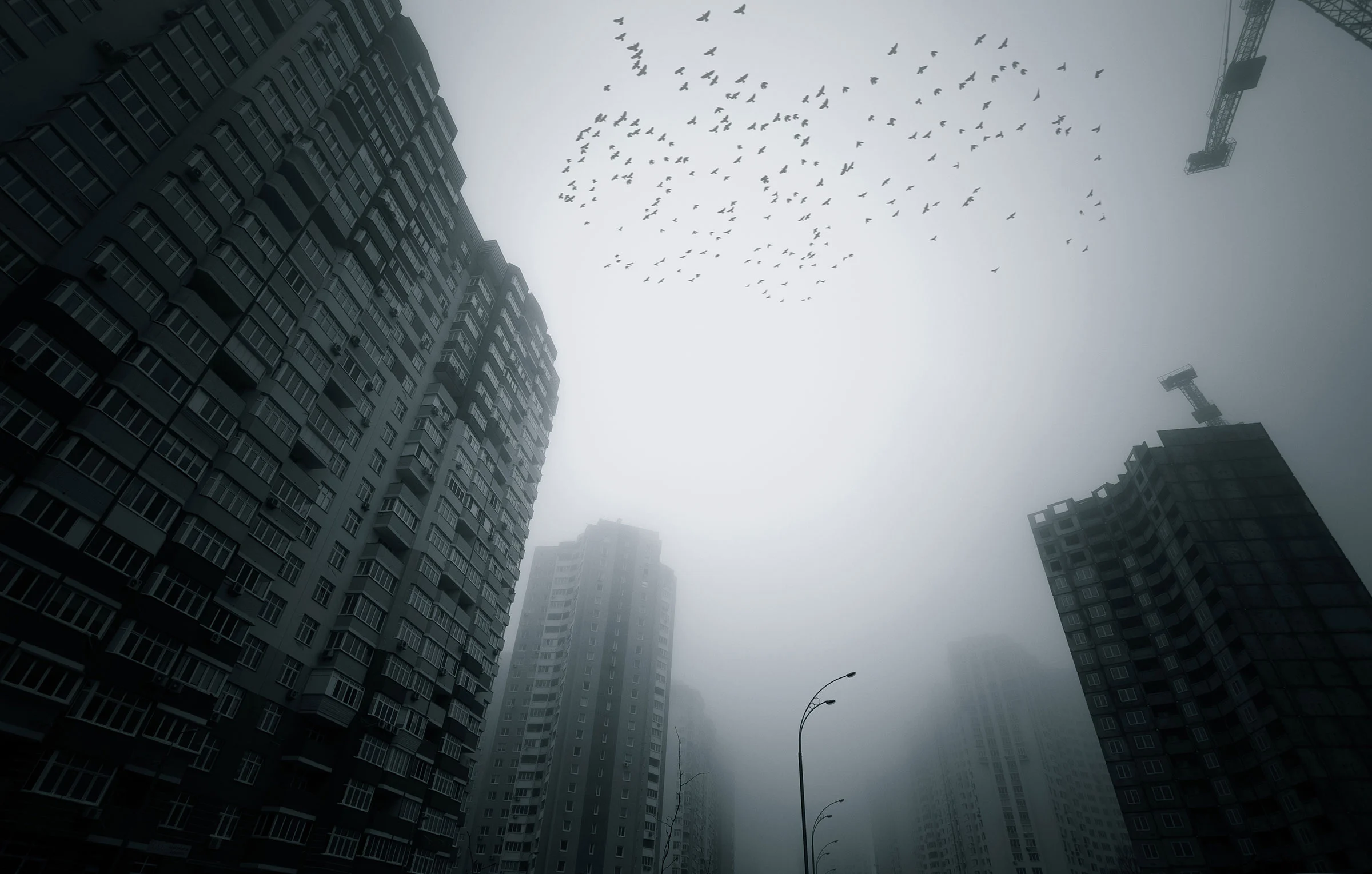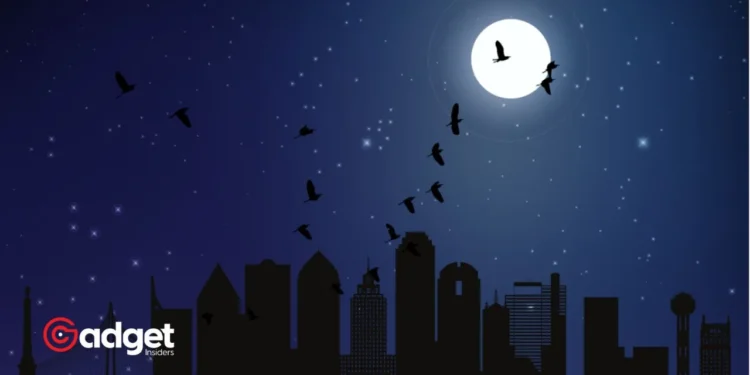In the heart of Texas, as city lights blaze against the night sky, a silent crisis unfolds each spring and autumn. The state becomes a crucial passageway for approximately two billion migrating birds, making it a hotspot for potentially fatal encounters between avian travelers and urban structures.
Amidst this, Texas has taken a pioneering step with the “Lights Out, Texas!” campaign, aiming to dim the lights and make the night safer for these winged visitors.

The Perilous Path of Migratory Birds
It was a sobering morning in May 2017 when Josh Henderson, an animal services supervisor, was called to a distressing scene at One Moody Plaza in Galveston. A total of 395 migratory birds perished after colliding with the skyscraper.
This incident highlighted a widespread issue: brightly lit buildings are death traps for birds such as warblers, which navigate by celestial cues at night. The birds, drawn to or disoriented by the lights, often crash into the buildings with fatal consequences.
Henderson, deeply moved by the tragedy, has since worked to turn such heartbreaking incidents into opportunities for education and change. “It was awe-inspiring and tragic,” Henderson remarked, reflecting on the incident that led him to advocate for safer migration conditions.
About two billion birds fly through Texas in the spring – and lit-up buildings pose a deadly risk. Turning out the lights at night could save countless fatal collisions.
Read more from @riley_farrell_ via @BBC. https://t.co/pFNGuAaxbW
— Defenders of Wildlife (@Defenders) April 12, 2024
Texas: Lights Out for Safety
The aftermath of the Galveston incident spurred local and national efforts to address the hazards faced by nocturnal migratory birds. Organizations like Houston Audubon and the National Audubon Society have been at the forefront of promoting “Lights Out” initiatives, which encourage turning off non-essential lights during peak migration hours in the spring and fall.
This movement has gained momentum across Texas, with many cities adopting the practice. “Turning out more of the lights can help save birds’ lives,” Henderson has advocated, emphasizing the simple yet effective nature of this strategy. The initiative has shown promise; early data suggests a significant reduction in bird fatalities when lights are dimmed.

A Statewide Commitment to Conservation
Texas’ position along major migratory flyways—the Central Americas Flyway and the Mississippi Flyway—makes it a critical area for bird conservation. The “Lights Out, Texas!” campaign is a testament to the state’s commitment to protecting these natural travelers.
Andrew Farnsworth, a migration ecologist, highlights the importance of such initiatives: “Texas is a place where we want to make sure that passage is as easy and safe as possible.”
The campaign is supported by data-driven tools like the BirdCast migration forecast maps developed by the Cornell Lab of Ornithology, which provide real-time insights into migration patterns. These tools help predict when the greatest number of birds will be passing through, allowing for more targeted conservation efforts.
The Broader Implications of Bird Conservation
The conservation of migratory birds is not just about preventing individual tragedies; it has broader ecological implications. Birds play crucial roles in ecosystems, such as controlling pests, pollinating plants, and dispersing seeds. Their health and safety are indicators of the overall health of the environment.
Chloe Saucedo Crumley of Audubon Texas points out the need for ongoing vigilance and adaptation of conservation strategies to ensure effectiveness. “It’s hard to assign causation and correlation already,” Crumley stated, acknowledging the complexities of studying migratory patterns influenced by multiple factors, including urbanization.

A Call to Action
The efforts in Texas reflect a growing recognition of the impact of urbanization on wildlife and the need for sustainable coexistence. As cities continue to expand, the challenge of protecting migratory birds will only increase.
However, through initiatives like “Lights Out, Texas!” and the continued dedication of researchers, conservationists, and the public, there is hope that these birds can navigate the night safely.
By adopting simple measures such as dimming city lights during critical migration periods, we can drastically reduce the risks faced by these birds, ensuring that their incredible journeys continue to inspire and remind us of our shared responsibility to the planet.
As Farnsworth succinctly puts it, “We need to keep our connection to nature through our eyes, ears, nose, whatever—and use senses to experience the core of all this research and observation.”
Protecting these avian travelers isn’t just about preserving nature; it’s about ensuring a balanced ecosystem for future generations. The story of Texas and its darkened skyscrapers serves as a beacon of hope and a model for others to follow.










